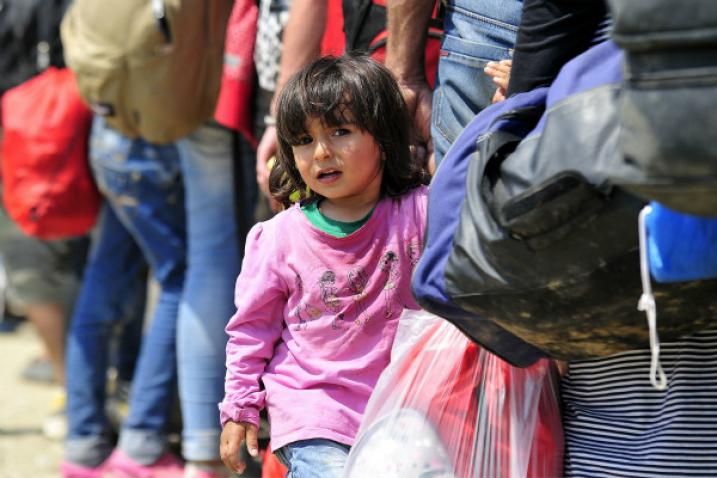Migration : 272 million migrants in the world

Raber Y. Aziz/UN Migration Agency
The UN General Assembly proclaimed 18th December as International Migrants Day in December 2000. On that day in 1990, the Assembly adopted the International Convention on the Protection of the Rights of All Migrant Workers and Members of Their Families .
Since the earliest times, humanity has been on the move. Some people move in search of work or economic opportunities, to join family, or to study. Others move to escape conflict, persecution, terrorism, or human rights violations. Still others move in response to the adverse effects of climate change, natural disasters, or other environmental factors.
Today, more people than ever live in a country other than the one in which they were born. In 2019, the number of migrants globally reached an estimated 272 million, 51 million more than in 2010. International migrants comprise 3.5 per cent of the global population. Compared to 2.8 per cent in 2000 and 2.3 per cent in 1980, the proportion of international migrants in the world population has also risen.
While many individuals migrate out of choice, many others migrate out of necessity. The number of globally forcibly displaced people topped 70 million for the first time in UNHCR’s almost 70 year history at the end of 2018. This number includes almost 26 million refugees, 3.5 million asylum seekers, and over 41 million internally displaced persons.
Who is a migrant?
The UN Migration Agency (IOM) defines a migrant as any person who is moving or has moved across an international border or within a State away from his/her habitual place of residence, regardless of (1) the person’s legal status; (2) whether the movement is voluntary or involuntary; (3) what the causes for the movement are; or (4) what the length of the stay is.
Migrants and the SDGs
The 2030 Agenda for Sustainable Development recognizes for the first time the contribution of migration to sustainable development. 11 out of the 17 Sustainable Development Goals (SDGs) contain targets and indicators relevant to migration or mobility. The Agenda’s core principle is to “leave no one behind,” not even migrants.
The SDGs’ central reference to migration is made in target 10.7: to facilitate orderly, safe, regular and responsible migration and mobility of people, including through the implementation of planned and well-managed migration policies. Other targets directly related to migration mention trafficking, remittances, international student mobility and more. Moreover, migration is indirectly relevant to many more cross-cutting targets.
The International Organization for Migration (IOM)
Established in 1951, IOM is the leading inter-governmental organization in the field of migration. IOM works to ensure the orderly and humane management of migration, to promote international cooperation on migration issues, to assist in the search for practical solutions to migration problems and to provide humanitarian assistance to migrants in need, including refugees and internally displaced people. In 2016, IOM entered into an agreement with the United Nations (A/70/976), becoming one of its specialized agencies.
To promote diversity and inclusion of migrants in society, IOM has developed the platform ‘i am a migrant,’ which features first-hand accounts from individuals, providing insights into the experiences of migrants of all backgrounds and throughout their migratory journeys.
Data on migration
In 2019, the number of international migrants worldwide – people residing in a country other than their country of birth – reached 272 million (from 258 million in 2017). Female migrants constituted 48 per cent of this international migrant stock. There are an estimated 38 million migrant children, three out of four international migrants are of working age, meaning between 20 and 64 years old. 164 million are migrant workers. Approximately 31% of the international migrants worldwide reside in Asia, 30% in Europe, 26% in the Americas, 10% in Africa and 3% in Oceania [Source: Global Migration Data Portal].
It can be a challenge to make sense of available migration data, as this is often scattered across different organisations and agencies, and not easily comparable. IOM’s Global Migration Data Analysis Centre runs the Global Migration Data Portal, which serves as a unique access point to timely, comprehensive migration statistics and reliable information about migration data globally. The site presents migration data from diverse sources and aims to help policy makers, national statistical officers, journalists and the general public interested in migration to navigate the increasingly complex landscape of migration data.
Global Action
Large-scale movements of refugees and migrants affect all UN Member States and they require closer cooperation and responsibility-sharing. In 2016, the UN General Assembly convened a high-level plenary meeting on addressing large movements of refugees and migrants. The UN Secretary-General prepared the report ‘In Safety and Dignity: Addressing Large Movements of Refugees and Migrants’ with recommendations on the issue.
UN member states adopted a set of commitments, known as the New York Declaration for Refugees and Migrants (A/RES/71/1), in which the recognize the need for a comprehensive approach to migration. The New York Declaration acknowledges the positive contribution of migrants to sustainable and inclusive development, and commits to protecting the safety, dignity and human rights and fundamental freedoms of all migrants, regardless of their migratory status.
In March 2017, the UN Secretary-General appointed Louise Arbour of Canada as his Special Representative for International Migration to lead the follow-up to the migration-related aspects of the High-Level Summit.
As a result of the New York Declaration, UN Member States agreed to work together to develop the Global Compact for Safe, Orderly and Regular Migration, adopted at an intergovernmental conference on international migration in December 2018 in Morocco. The GCM covers diverse issues such as strengthening labour rights for migrant workers, improving migration data as a basis for evidence-based policies, saving lives and establishing international efforts on missing migrants, and many others. The implementation of the GCM will represent progress in governing migration in a way that increases its benefits for individuals, communities and countries, and reduces its risks for all.
Jan. 11 , 2021












